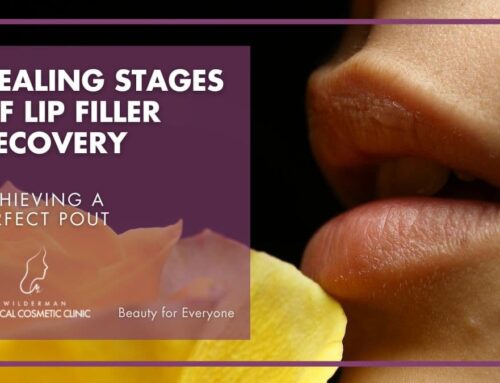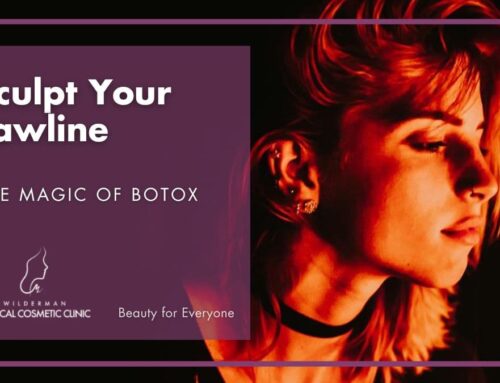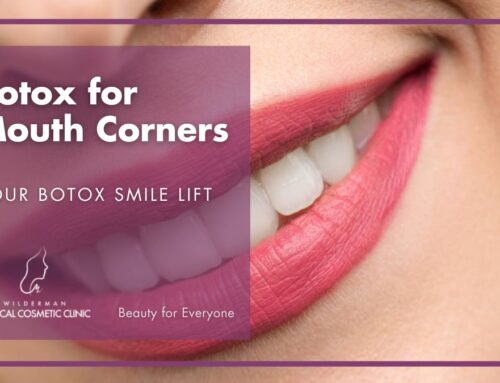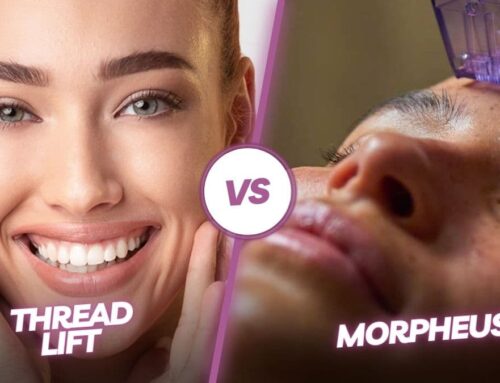Deep Wrinkles
Treatments and Prevention
As we age, our skin undergoes various changes, including the appearance of wrinkles. Wrinkles can be classified into two types: dynamic wrinkles and static wrinkles.
Dynamic wrinkles are temporary lines and creases that appear during facial movements or expressions.
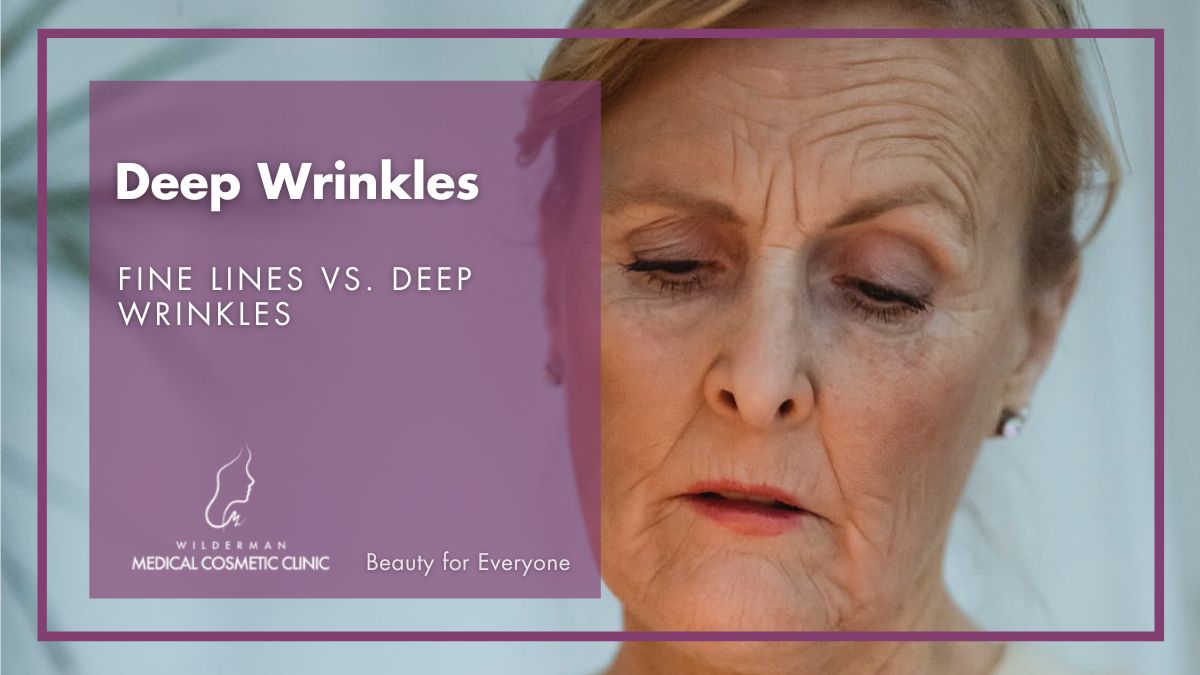
Get immediate answers to your questions about treatment options, costs, expected outcomes, and more.
- Expert Diagnosis
- Customized Treatment Plans
- No Obligation
- Comfort and Privacy
- Immediate Answers
Common examples of dynamic wrinkles include smile lines, frown lines, and forehead lines. On the other hand, static wrinkles also known as deep wrinkles are visible even when the face is at rest or in a neutral position.
Forehead wrinkles, crow’s feet, nasolabial folds, marionette lines, vertical lip lines, and neck wrinkles are examples of static wrinkles. In this article, we will delve into the world of deep wrinkles, exploring their definition, distinguishing them from fine lines, examining the best treatments available, and providing helpful tips for prevention.
What are Deep Wrinkles?
Deep wrinkles or static wrinkles are pronounced and etched lines or creases that appear on the skin. These wrinkles form due to a combination of factors, including natural aging processes, genetic predisposition, exposure to environmental factors (such as sun damage and pollution), smoking, and repetitive facial expressions. As we age, the skin’s ability to produce collagen and elastin decreases, leading to a loss of skin elasticity and the formation of deeper, more prominent wrinkles.
Deep wrinkles tend to occur in areas that experience repetitive facial movements or have thinner skin, such as the forehead, around the eyes (crow’s feet), and on the nasolabial folds (lines between the nose and mouth). They can also appear on the cheeks, chin, and neck.
Deep wrinkles can significantly impact a person’s appearance and may contribute to an aged or tired look. Many individuals seek treatments and skincare regimens to reduce the appearance of deep wrinkles and restore a more youthful and rejuvenated appearance.
Fine Lines vs. Deep Wrinkles
Fine lines and deep wrinkles may seem similar, but they have distinct characteristics. Fine lines are shallow, and thin, and typically appear as the earliest signs of aging. They are often associated with dynamic movements of facial muscles, such as smiling or frowning, and may temporarily disappear when the face is at rest.
In contrast, deep wrinkles are more pronounced, extend deeper into the skin, and are present even when the face is relaxed. While both fine lines and deep wrinkles are signs of aging, deep wrinkles are more significant and may require more targeted treatments to reduce their appearance.
Treatments for Deep Wrinkles
When it comes to treating deep wrinkles, there are several effective options available. Here are some commonly used treatments:
- Topical Treatments: Retinoids, derived from vitamin A, are commonly used in topical creams or gels to reduce the appearance of deep wrinkles. They promote collagen production, improve skin texture, and enhance cell turnover. Other ingredients like peptides, antioxidants, and hyaluronic acid can also be beneficial in hydrating the skin and reducing the depth of wrinkles.
- Chemical Peels: Chemical peels involve the application of a chemical solution to exfoliate the skin’s top layers, encouraging cell turnover and reducing the appearance of wrinkles. Deeper peels may be more effective for deep wrinkles, but they require professional supervision and longer recovery times.
- Dermal Fillers: Injectable dermal fillers, often made from hyaluronic acid, can be used to fill in deep wrinkles and restore lost volume in the skin. The filler is injected beneath the wrinkle, plumping it up and creating a smoother appearance. Results are immediate and can last several months to a year, depending on the specific filler used.
- Botulinum Toxin (Botox): Botox injections are commonly used to relax the muscles that cause dynamic wrinkles, such as frown lines and crow’s feet. By temporarily paralyzing the underlying muscles, Botox can soften the appearance of deep wrinkles and prevent them from worsening.
- Microfocused Ultrasound (Ultherapy): This non-invasive treatment uses ultrasound energy to heat the deep layers of the skin, stimulating collagen production and tightening the skin. The procedure helps to reduce the appearance of deep wrinkles and improve overall skin firmness and texture.
- Microneedling: Microneedling involves using a device with tiny needles to create controlled micro-injuries in the skin. This stimulates collagen production and promotes skin rejuvenation. Over time, microneedling can help reduce the depth of deep wrinkles and improve skin texture.
- Laser Resurfacing: Laser treatments, such as fractional laser therapy, can stimulate collagen production and improve the texture of the skin. The laser targets the deep layers of the skin, promoting skin tightening and reducing the appearance of wrinkles. Multiple sessions may be required for optimal results.
- Radiofrequency Treatments: Radiofrequency (RF) treatments use controlled energy to heat the deep layers of the skin. This stimulates collagen production and improves skin elasticity, reducing the appearance of deep wrinkles. RF treatments can be performed using various devices, such as RF microneedling or RF skin tightening devices.
- Morpheus8: Morpheus8 is one such minimally invasive treatment that combines microneedling with radiofrequency technology. It delivers RF energy through tiny needles, which helps remodel collagen and elastin fibers in the deep layers of the skin. Morpheus8 can effectively reduce the appearance of deep wrinkles and improve skin texture and tightness.
- Dermabrasion: Dermabrasion involves the use of a specialized device to mechanically exfoliate the skin’s top layers. This procedure helps smoothen deep wrinkles by removing damaged skin and stimulating collagen production. Dermabrasion is typically performed by a dermatologist or plastic surgeon.
- Facelift: A facelift, also known as rhytidectomy, is a surgical procedure that addresses deep wrinkles and sagging skin in the face and neck. The procedure involves tightening underlying facial tissues, removing excess skin, and repositioning facial muscles to create a more youthful appearance. A facelift can have long-lasting effects on deep wrinkles but is a more invasive treatment option.
It’s important to consult with a qualified dermatologist or cosmetic professional to determine the most suitable treatment option for your specific needs. They will consider factors such as your skin type, the severity of your deep wrinkles, and any underlying health conditions before recommending the most appropriate treatment plan.
Tips for Prevention
While complete prevention of deep wrinkles is not possible, adopting certain lifestyle habits can minimize their development and delay their onset:
- Protect Your Skin from the Sun: UV rays can accelerate the aging process and contribute to the formation of wrinkles. Protect your skin by wearing sunscreen with a broad-spectrum SPF of 30 or higher, even on cloudy days. Cover exposed areas with protective clothing and seek shade when the sun is strongest.
- Quit Smoking: Smoking damages collagen and elastin fibers, leading to premature aging and the formation of wrinkles. Quitting smoking can help improve your skin’s health and prevent deep wrinkles from developing.
- Hydrate Your Skin: Keep your skin well-hydrated by using a moisturizer suitable for your skin type. Hydrated skin appears plumper and more supple, which can help reduce the appearance of wrinkles.
- Follow a Healthy Diet: Maintain a well-balanced diet rich in antioxidants, vitamins, and minerals. Include plenty of fruits, vegetables, whole grains, and lean proteins to provide essential nutrients that promote skin health and help protect against wrinkles.
- Stay Hydrated Internally: Drink an adequate amount of water daily to keep your body and skin hydrated. Proper hydration supports overall skin health and elasticity.
- Establish a Skincare Routine: Cleanse your face using a mild cleanser, apply moisturizer and incorporate exfoliation. Use products appropriate for your skin type. Look for products with anti-aging properties and ingredients such as retinoids, peptides, or hyaluronic acid. These can help promote collagen production and reduce the appearance of wrinkles.
- Avoid Excessive Facial Movements: Repetitive facial expressions, such as squinting or furrowing your brows, can contribute to the formation of deep wrinkles over time. Be mindful of these habits and try to relax your facial muscles whenever possible.
- Get Sufficient Sleep: Aim for quality sleep to allow your skin to repair and regenerate. Lack of sleep can contribute to the breakdown of collagen and elastin, leading to the development of wrinkles.
- Manage Stress: Chronic stress can affect your skin’s health and accelerate the aging process. Practice stress management techniques like exercise, meditation, or engaging in hobbies to reduce stress levels and promote overall well-being.
Remember, consistency is key when it comes to prevention. Adopting these habits early on and maintaining them over time can significantly contribute to healthier, more youthful-looking skin and help prevent the formation of deep wrinkles.
Conclusion
Deep wrinkles can be a natural part of the aging process, but there are various treatments available to minimize their appearance and improve skin texture. It is essential to understand the difference between fine lines and deep wrinkles and take preventative measures to slow down their progression and maintain healthier, more youthful-looking skin.
By combining proper skincare, and lifestyle choices, and seeking professional treatments, when necessary, you can significantly reduce the visibility of deep wrinkles and feel more confident in your skin as you age gracefully. Remember, a proactive approach to skincare and overall well-being is key to achieving smoother, more radiant skin at any stage of life.
Reference
Cleveland Clinic. (Jul 27, 2022). Wrinkles. Retrieved from https://my.clevelandclinic.org/health/articles/10984-wrinkles (Accessed Jul 6, 2023).
Healthline. (Sep19, 2019). How to Prevent Wrinkles. Retrieved from https://www.healthline.com/health/skin/how-to-prevent-wrinkles#wrinkle-prevention (Accessed Jul 6, 2023).
Medical News Today. (Updated on Apr 24, 2023). Wrinkles: Preventing and treating. Retrieved from https://www.medicalnewstoday.com/articles/174852#prevention (Accessed Jul 6, 2023).
Related content that may be of interest
What Makes Wrinkles Worse: Do’s, and Don’ts of Wrinkle Prevention – Wrinkles, those fine lines that gradually appear on our skin as we age, are a natural part of life. While we can’t completely stop the clock, there are steps we can take to slow down the development of wrinkles and maintain …
Wrinkles and Fine Lines: Common skin concerns – Wrinkles and fine lines are common skin concerns that can affect individuals as they age. While the terms are often used interchangeably, there are differences between fine lines and wrinkles, both in terms of appearance and treatment options.
Microneedling for Wrinkles: A Revolutionary Approach to Rejuvenating Your Skin – Microneedling is a cosmetic procedure that has garnered attention for its effectiveness in treating wrinkles and promoting skin rejuvenation. Microneedling involves the use of a specialized device equipped with …
Fillers for Sleep Wrinkles: Secret to Smooth Sleep – Sleep is a crucial component of our overall well-being, but did you know that the way you sleep could contribute to the formation of wrinkles? Sleep wrinkles, also known as sleep lines, are caused by …
Join us on the journey to your best skin ever!
Beyond Beauty: Elevate Your Routine with Insider Tips and Breakthroughs – Subscribe Now!
Transform your beauty routine into something extraordinary!


